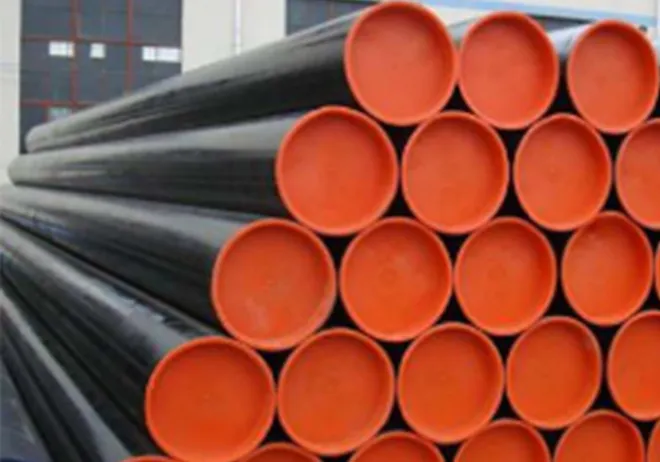-
Cangzhou Yulong Steel Co., Ltd.
-
Phone:
+86 13303177267 -
Email:
admin@ylsteelfittings.com
- English
- Arabic
- Italian
- Spanish
- Portuguese
- German
- kazakh
- Persian
- Greek
- French
- Russian
- Polish
- Thai
- Indonesian
- Vietnamese
- Zulu
- Korean
- Uzbek
- Hindi
- Serbian
- Malay
- Ukrainian
- Gujarati
- Haitian Creole
- hausa
- hawaiian
- Hebrew
- Miao
- Hungarian
- Icelandic
- igbo
- irish
- Japanese
- Javanese
- Kannada
- Khmer
- Rwandese
- Afrikaans
- Albanian
- Amharic
- Armenian
- Azerbaijani
- Basque
- Belarusian
- Bengali
- Bosnian
- Bulgarian
- Catalan
- Cebuano
- China
- China (Taiwan)
- Corsican
- Croatian
- Czech
- Danish
- Esperanto
- Estonian
- Finnish
- Frisian
- Galician
- Georgian
- Kurdish
- Kyrgyz
- Lao
- Latin
- Latvian
- Lithuanian
- Luxembourgish
- Macedonian
- Malgashi
- Malayalam
- Maltese
- Maori
- Marathi
- Mongolian
- Myanmar
- Nepali
- Norwegian
- Norwegian
- Occitan
- Pashto
- Dutch
- Punjabi
- Romanian
- Samoan
- Scottish Gaelic
- Sesotho
- Shona
- Sindhi
- Sinhala
- Slovak
- Slovenian
- Somali
- Sundanese
- Swahili
- Swedish
- Tagalog
- Tajik
- Tamil
- Tatar
- Telugu
- Turkish
- Turkmen
- Urdu
- Uighur
- Welsh
- Bantu
- Yiddish
- Yoruba

Nov . 12, 2024 20:58 Back to list
bending stainless steel tubing by hand
Bending Stainless Steel Tubing by Hand A Comprehensive Guide
Bending stainless steel tubing by hand can be a challenging but rewarding task for both hobbyists and professionals alike. It allows for the creation of custom shapes and angles that can be used in various applications ranging from automotive exhaust systems to the construction of furniture. In this article, we’ll explore the methods, tools, and best practices needed to successfully bend stainless steel tubing by hand.
Understanding Stainless Steel Tubing
Stainless steel tubing is known for its high resistance to corrosion, strength, and versatility. It is often used in environments where other metals would fail, such as in plumbing, structural applications, and even in the kitchen. The tubing comes in various grades, with 304 and 316 being the most common due to their excellent mechanical properties and resistance to oxidation.
Tools of the Trade
To bend stainless steel tubing effectively by hand, you'll need a few essential tools
1. Tube Bender A manual or hydraulic tube bender is ideal for achieving precise bends. A manual bender is easier to transport and operate, while a hydraulic version offers more force and versatility.
2. Pipe Cutter This tool is essential for making clean cuts in the tubing, which is vital for maintaining structural integrity at the bend.
3. Deburring Tool After cutting the tubing, a deburring tool will ensure that the edges are smooth, preventing potential injuries or damage to fittings.
4. Marker and Measuring Tape Accurate measurements are crucial for bending. A marker will help you mark the bend points clearly.
5. Clamps or Vices Secure the tubing in place while you work to ensure precise bending.
bending stainless steel tubing by hand

Steps to Bend Stainless Steel Tubing by Hand
1. Measure and Mark Before bending, measure the length of tubing you need and mark the points where the bends will occur. Accurate measurements are crucial to achieving the desired angles and lengths.
2. Prepare the Tubing Cut the tubing to the correct length using a pipe cutter. After cutting, use a deburring tool to smooth the edges. This step will prevent sharp edges that could cause injury or hinder the bending process.
3. Set Up the Tube Bender Place the tubing into the tube bender according to the manufacturer's instructions. Ensure the aligning marks on the bender correspond with your pre-marked points for accuracy.
4. Begin Bending Slowly apply force to the bender's handle. It's important to bend gradually to avoid kinking the tubing. If using a manual bender, take your time and apply steady pressure. For hydraulic benders, control the pressure to ensure a smooth bend.
5. Check the Bend After completing the bend, check the angle using a protractor or angle gauge to ensure it meets your specifications. If adjustments are necessary, minor tweaks can often be made by hand or by repositioning the tubing in the bender.
6. Finish Up Once satisfied with the bends, clean the tubing as needed and prepare it for installation or further fabrication. Inspect your work for any imperfections and correct them before proceeding.
Best Practices
- Always wear appropriate safety gear, including gloves and safety glasses, to protect yourself from metal shards and sharp edges. - Practice bending on scrap pieces of tubing first to get a feel for the material and the bending process. - Consider heating the tubing if you encounter difficulties; using a torch can make bending easier but requires careful handling to avoid damage.
Conclusion
Bending stainless steel tubing by hand is a skill that can enhance your craftsmanship and open up new possibilities for your projects. With the right tools and techniques, you can achieve precise bends that not only serve functional roles but also add aesthetic appeal. Whether you're working on a DIY project or a professional installation, mastering this technique will undoubtedly elevate your work in metallurgy.
Latest news
-
ANSI 150P SS304 SO FLANGE
NewsFeb.14,2025
-
ASTM A333GR6 STEEL PIPE
NewsJan.20,2025
-
ANSI B16.5 WELDING NECK FLANGE
NewsJan.15,2026
-
ANSI B16.5 SLIP-ON FLANGE
NewsApr.19,2024
-
SABS 1123 FLANGE
NewsJan.15,2025
-
DIN86044 PLATE FLANGE
NewsApr.19,2024
-
DIN2527 BLIND FLANGE
NewsApr.12,2024
-
JIS B2311 Butt-Welding Fittings LR/SR 45°/90° /180°Seamless/Weld
NewsApr.23,2024











